Beschreibung
50a jubileo de Bahaa Esperanto-Ligo
50th jubilee of the Bahá’í Esperanto League
in Esperanto and ENGLISH
Enhavo
Enkonduko
Jubileaj salutmesaĝoj
1. La naskiĝo de Bahaa Esperanto-Ligo (BEL)
2. La interplektiĝo de bahaaj kaj esperantistaj idealoj
La naskiĝo de Esperanto – la lingvo de espero
Bahaaj konvinkoj rilate al monda unueco kaj monda lingvo
3. La historia fono de la fondo de BEL
Fruaj bahaanoj-esperantistoj
Postmilita restariĝo
4. Esperanto kaj BEL hodiaŭ
Kreskanta influo de UEA
Multfaceta ekspansio de la bahaa komunumo
Plia uzado kaj diskonigo de Esperanto inter bahaanoj
Bahaa propono por la adopto de internacia helpa lingvo fare de UN
Contents
Introduction
Jubilee Greeting Messages
1. The Birth of the Bahá’í Esperanto League (BEL)
2. Interlacing of Esperantist and Bahá’í Ideals
The dawnings of Esperanto — the language of hope
Bahá’í beliefs on world unity and world language
3. History Leading to the Formation of BEL
Early Bahá’í Esperantists
Postwar recovery
4. Esperanto and BEL Today
Rising influence of the Universal Esperanto Association (UEA)
Multifaceted expansion of the Bahá’í community
Increased use of and promotion of Esperanto among Bahá’ís
A Bahá’í proposal for the adoption of an international auxiliary language by the UN
Enkonduko
Ĉi tiu libreto festas la 50-an datrevenon de Bahaa Esperanto-Ligo, kies “naskiĝtagon“, la 19a de marto 1973 (18-19-129 BE), markas historia letero ricevita de malgranda grupo de entuziasmaj bahaanoj en Usono de la Universala Domo de Justeco, la plej alta institucio de la Bahaa Kredo, kaj aprobanta la formadon de oficiale agnoskita grupo de bahaaj esperantistoj por kunordigi kunlaboron kun individuaj esperantistoj kaj esperantaj societoj tra la mondo.
La Bahaa Kredo, tutmonda religio fondita de Bahá’u’lláh en la 19a jarcento kies anoj apartenas al preskaŭ ĉiuj etnoj kaj vivas en preskaŭ ĉiuj anguloj de la tero, baziĝas sur kredo je la esenca unueco de la homaro. Ĝi havas inter siaj bazaj principoj la realigon de ĉi tiu unueco per rimedoj inkluzivantaj la adopton de universala helpa lingvo. Esperanto, kreita de Ludoviko Zamenhof dum la vivtempo de Bahá’u’lláh, estas la plej disvastiĝinta el la multaj proponitaj helplingvoj, kaj ĝia nomo reflektas la esperon, ke ĝi fariĝu instrumento de interkompreniĝo kaj paco. Estis nature kaj neeviteble, ke ekestis kunlaboro inter la du movadoj.
Efektive okazis organizitaj agadoj de bahaanoj-esperantistoj jam duonjarcenton antaŭ la fondo de BEL. En la 1920aj kaj 1930aj jaroj la bahaa gazeto La Nova Tago estis eldonita en Germanio. Je tio kunlaboris eminentaj bahaanoj kiel Martha Root, Hermann Grossmann kaj Lidia Zamenhof, la “Filino de Esperanto“. Bedaŭrinde la malpermeso de Esperanto kaj ankaŭ de la Bahaa Kredo en tiu lando en 1936 kaj 1937 ĉesigis ĉi tiun agadon. Kaj la tuta Esperanto-movado, kiu siatempe plejparte baziĝis en Eŭropo, preskaŭ malaperis en la milito-kaoso. Kiel ajn, post kelkaj jardekoj Esperanto ree multe progresis kaj en tiu kunteksto BEL estis iniciatita, ne en Eŭropo, sed en Nord- kaj Sudameriko. Jardekojn poste la apero de la interreto malfermas novajn perspektivojn por kreskado kaj kunlaboro.
Tiel la historio de BEL estas la historio de la interplektitaj rilatoj inter la Bahaa Kredo kaj Esperanto dum pli ol unu jarcento. Ĝi estas rakonto pri kiel la du tutmondaj movadoj eksciis unu pri la alia kaj ili ambaŭ komprenis, kiujn unikajn kvalitojn ofertas la alia. La Esperanto-movado, grandparte sub la egido de Universala Esperanto-Asocio (UEA), kunordigas, subtenas kaj ĝenerale antaŭenigas agadojn de kreskanta organiza strukturo el internaciaj, naciaj kaj lokaj asocioj, kiuj uzas la lingvon Esperanto por kulturaj, teknikaj kaj sociaj celoj kaj disponigas signifan parton de la diverseca literatura produktado en Esperanto, kiu aldone al la skribita vorto inkluzivas ankaŭ muzikon kaj filmojn. La Bahaa Kredo aliflanke, krom efektivigi senĉesan lernoprocezon ĉirkaŭ la mondo pri la baznivela evoluado kaj disvolviĝado de komunuma vivo, vivtenas multajn konstantajn instituciojn kunlaborantajn kun registaraj agentejoj kaj Unuiĝintaj Nacioj kaj ties neregistaraj asociitoj. Ĝi engaĝas sin en tutmonda kunlaboro sur terenoj kiel socia kaj ekonomia disvolviĝado, edukado kaj sano same kiel interreligia kunlaboro kaj harmonio. BEL estas tiu specifa bahaa agentejo, kiu estas ligita kun UEA kiel kunlaboranta faka asocio (KFA) kaj tiel estas la ĉefa ponto inter ĉi tiuj du organizaj strukturoj, kiuj strebas realigi la esperojn kaj aspirojn de ĉi tiuj du tutmondaj komunumoj.
Introduction
This booklet celebrates the 50th anniversary of the Bahá’í Esperanto League, whose “birthday”, 19 March 1973 (18-19-129 BE), is marked by a historic letter received by a small group of enthusiastic Bahá’ís in the United States from the Universal House of Justice, the highest institution of the Bahá’í Faith, authorizing the formation of an officially recognized group of Bahá’í Esperantists for the purpose of coordinating collaboration with individual Esperantists and Esperanto societies around the world.
The Bahá’í Faith, a worldwide religion founded by Bahá’u’lláh in the nineteenth century and comprised of individuals of virtually every race and living in virtually every corner of the world, is based on a belief in the essential oneness of humanity, and counts among its basic principles the realization of this oneness through instruments including the adoption of a universal auxiliary language. Esperanto, created by Ludwik Zamenhof during the lifetime of Bahá’u’lláh, is the most widespread of the many auxiliary languages which have been proposed, and its name reflects the hope that it would become a cause of understanding and peace. It was natural and inevitable that collaboration among the two movements would come about.
There indeed had been organized activities involving Bahá’í Esperantists dating back half a century prior to the founding of BEL. In the 1920s and 1930s the magazine “La Nova Tago” (The New Day) was produced in Germany by eminent Bahá’is such as Martha Root, Hermann Grossman, and Lidia Zamenhof, the “Daughter of Esperanto”. Sadly, the ban on Esperanto and then on the Bahá’í Faith in that country in 1936 and 1937 brought this effort to a halt, and the entire Esperanto movement, which was largely based in Europe, nearly disappeared in the wartime chaos. However, after a few decades Esperanto had made great progress in recovering, and in that context BEL was initiated, not in Europe, but in North and South America. Decades later the appearance of the internet opened new vistas for growth and collaboration.
Thus the story of BEL is the story of the interlaced relations between the Bahá’í Faith and Esperanto for over a century. It is a story of how the two global movements become aware of one another, each learning of the unique qualities that the other has to offer. The Esperanto movement, to a great proportion under the aegis of the Universal Esperanto Association (UEA), coordinates, supports and in general fosters activities in an expansive structure of international, national and local associations which use the Esperanto language for cultural, technological, and social purposes, and makes available a significant portion of the diverse literary production in Esperanto, which includes music and film in addition to the written word. The Bahá’i Faith, on the other hand, in addition to carrying out an unending learning process for community development at the grassroots level around the world, operates numerous permanent institutions associated with governmental agencies, the United Nations and its non-governmental associations, working on global cooperation in areas such as social and economic development, education, and health as well as interreligious unity. BEL is the specific Bahá’í agency which is affiliated with UEA as a cooperating specialised subgroup (“kunlaboranta faka asocio”, or KFA) and is thus the principal bridge between these two structures which strive to realize the hopes and aspirations of these two worldwide communities.
___
Magazin
210x 297 mm
Content: 24 pages

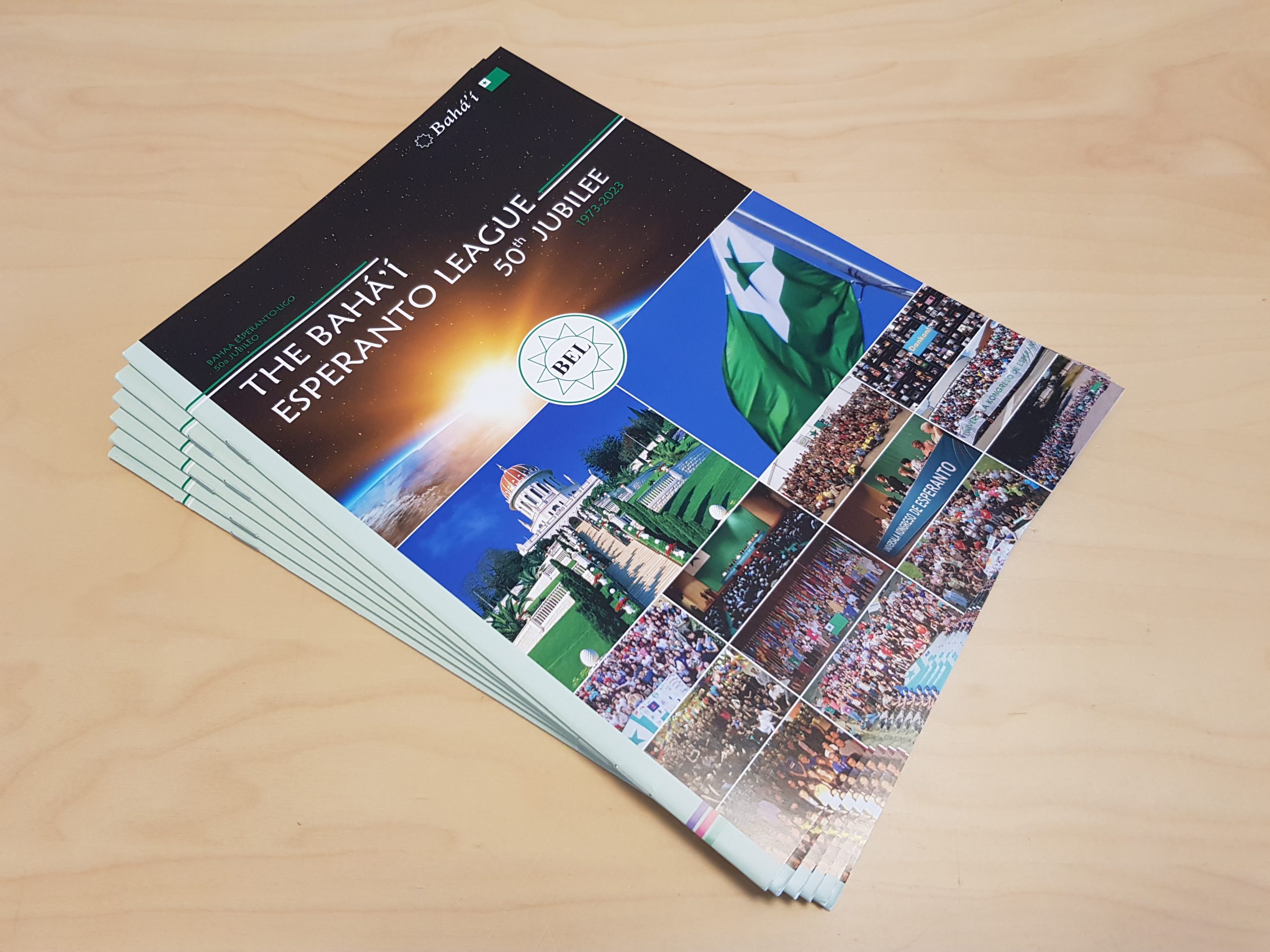
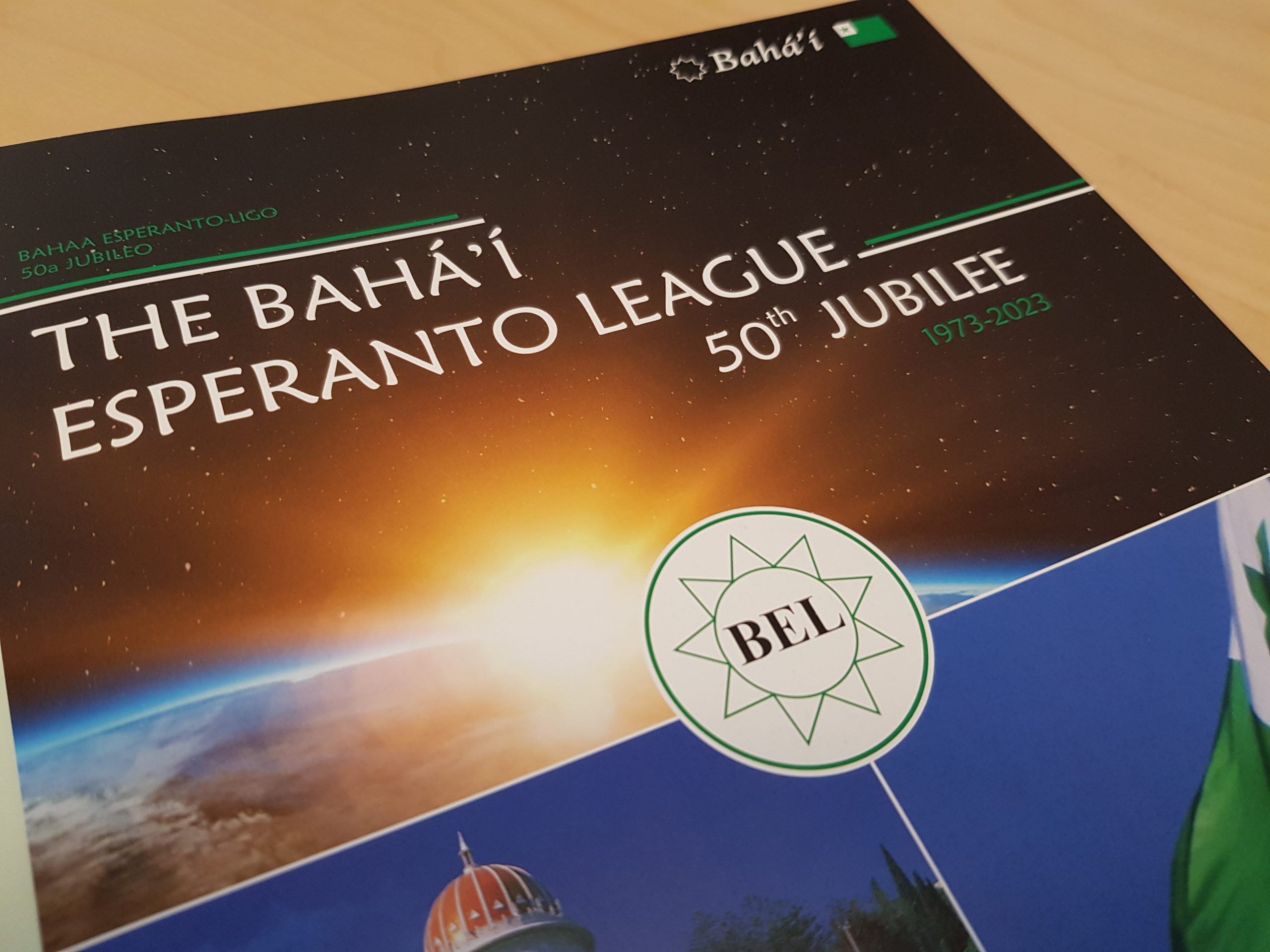
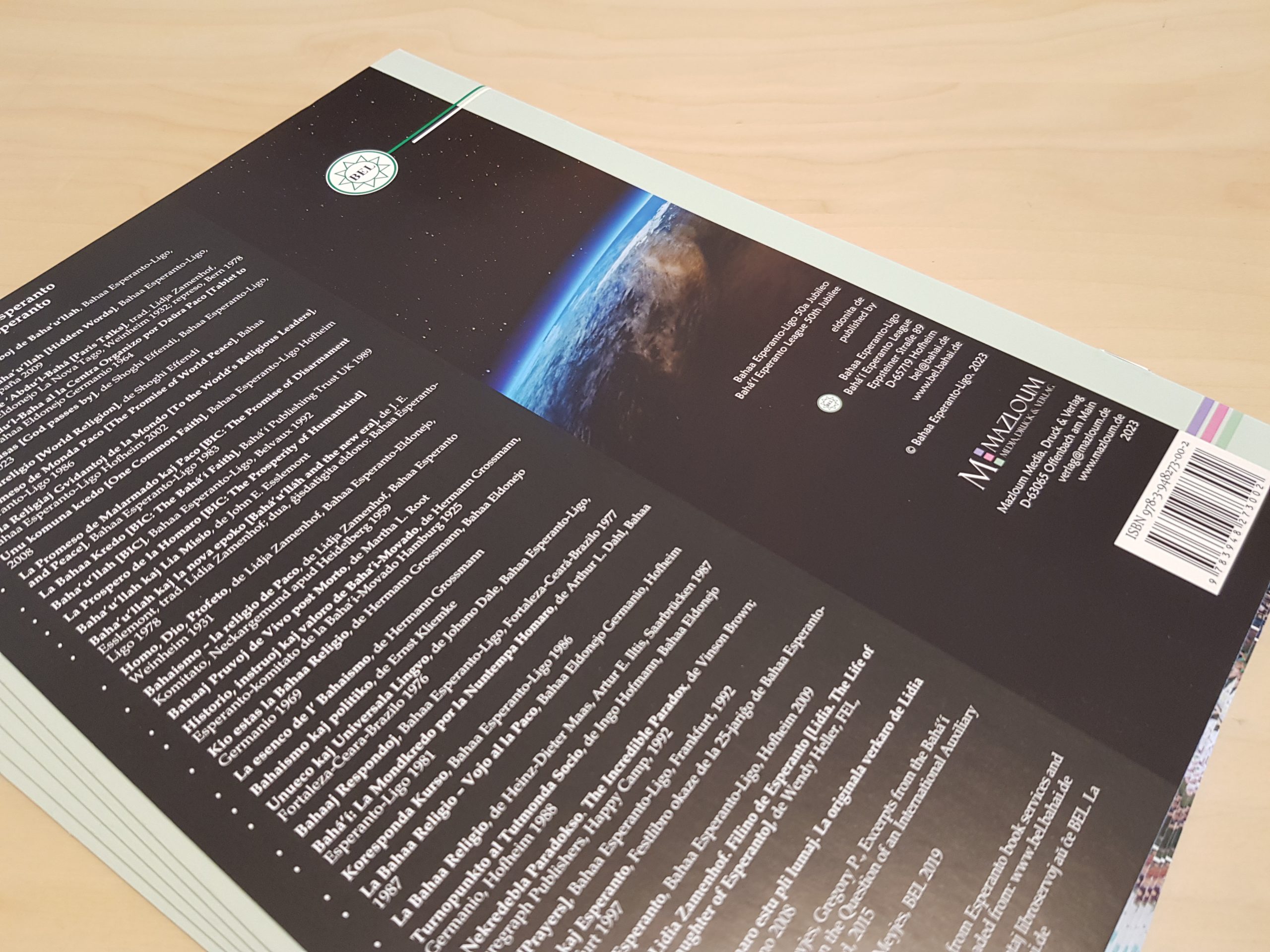
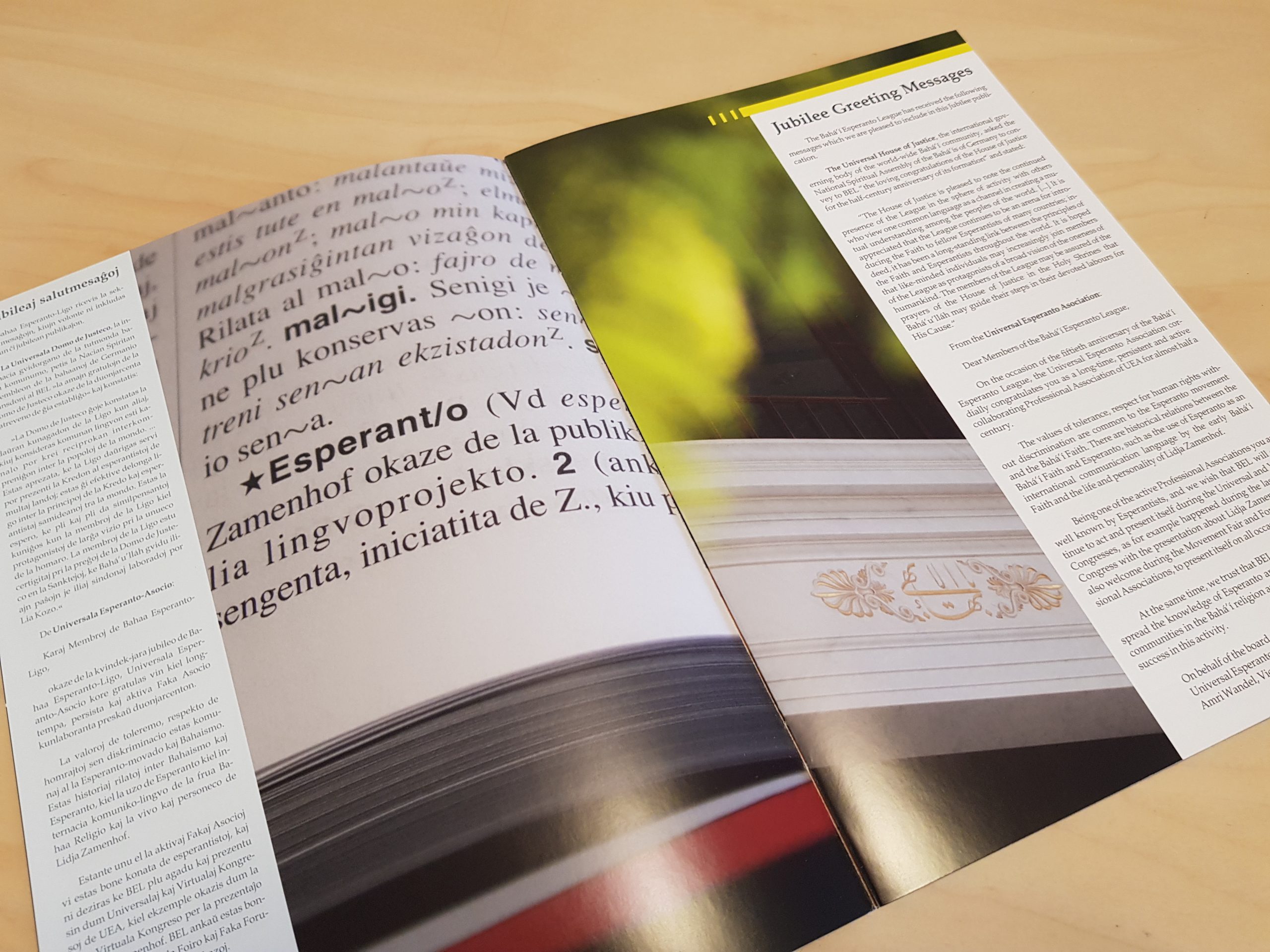
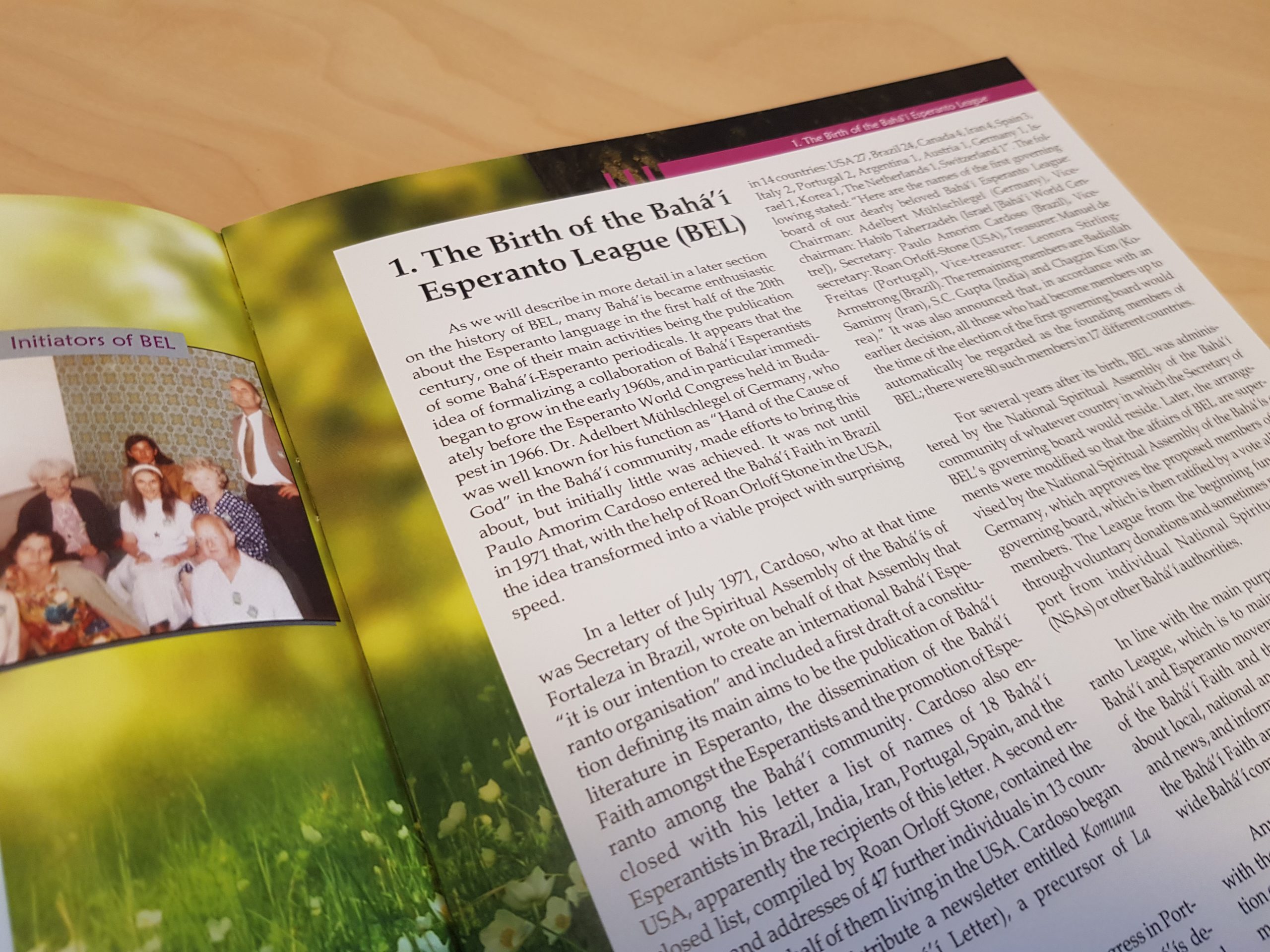
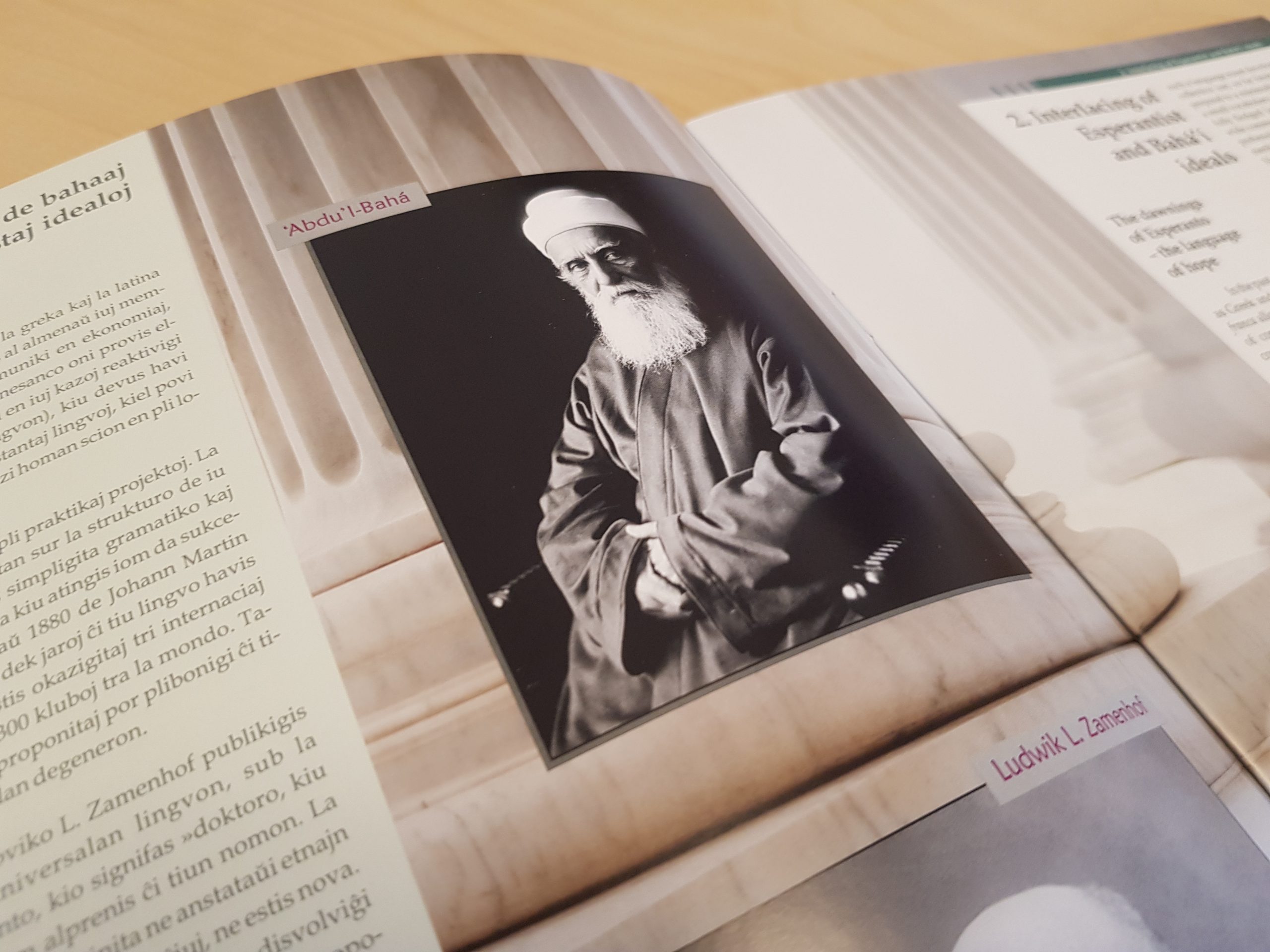
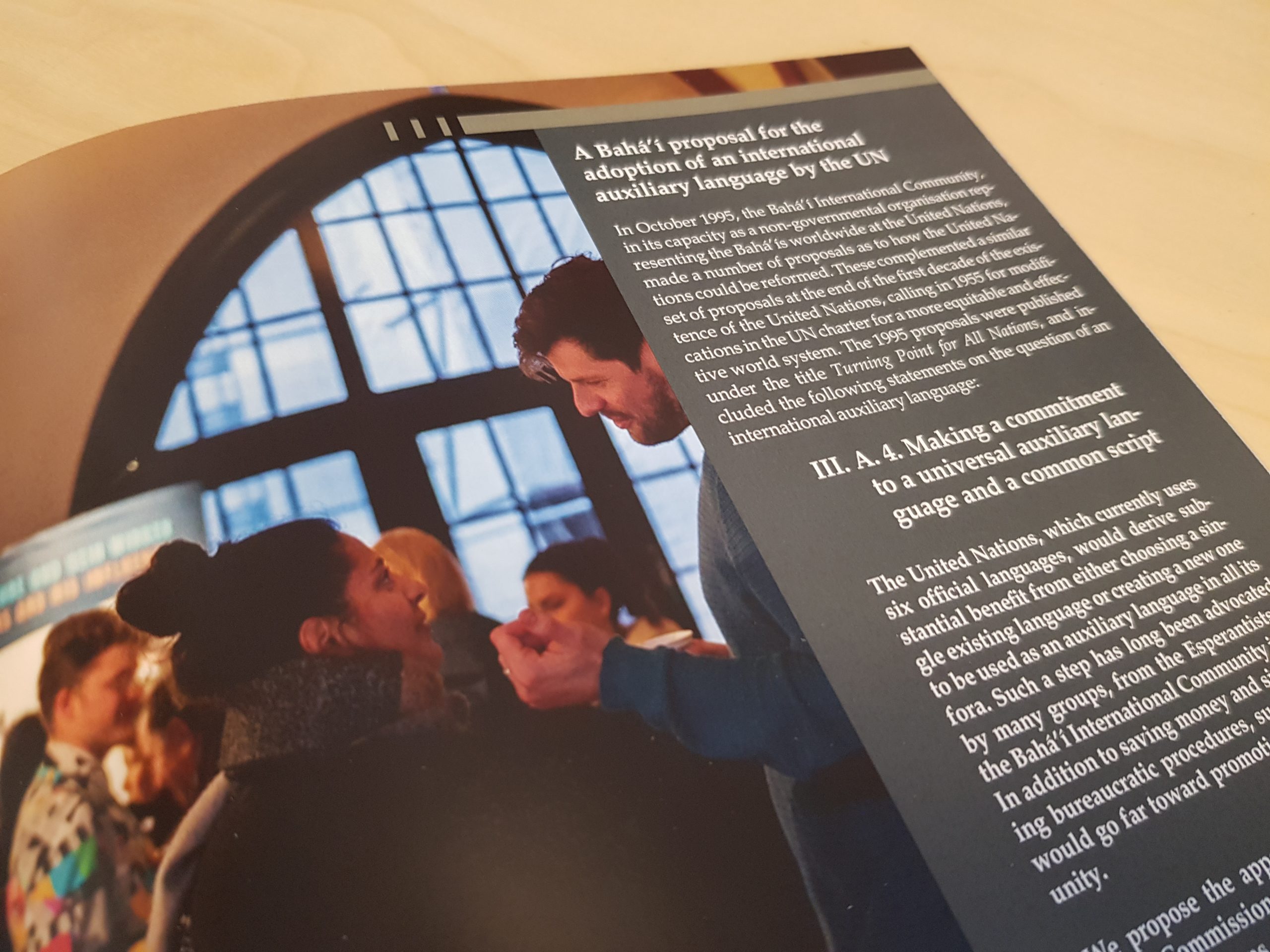

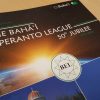


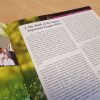

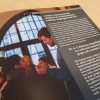




Bewertungen
Es gibt noch keine Bewertungen.